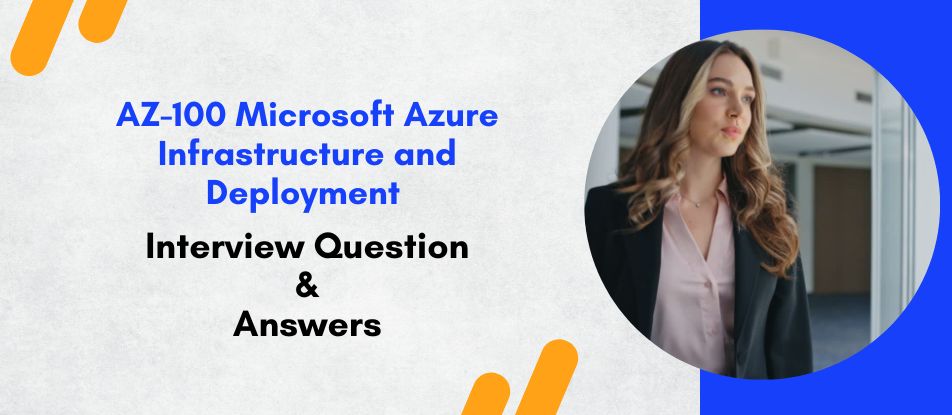
The AZ-100 Microsoft Azure Infrastructure and Deployment course is designed for professionals aiming to build expertise in deploying and managing Azure infrastructure. It covers essential components such as virtual machines, storage, networking, and identity services. Learners gain hands-on experience in configuring Azure resources, implementing security and governance, and optimizing cloud environments. This course serves as a foundational step toward the Azure Administrator Associate certification and is ideal for IT administrators, system engineers, and cloud professionals seeking to advance in Azure cloud operations.
AZ-100 Microsoft Azure Infrastructure and Deployment Training Interview Questions Answers - For Intermediate
1. What is the difference between a Resource Group and a Subscription in Azure?
A Resource Group is a container that holds related Azure resources such as VMs, databases, and network components. It provides a way to manage and organize resources for cost tracking, access control, and lifecycle management. A Subscription, on the other hand, defines the billing boundary and access controls for the Azure services used. Multiple resource groups can exist within a single subscription, allowing for flexible management and isolation of workloads.
2. How does Azure Site Recovery support business continuity?
Azure Site Recovery (ASR) helps businesses maintain continuity by enabling disaster recovery of on-premises and cloud-based workloads. It replicates workloads to a secondary location, allowing for automated failover and failback. With minimal downtime and data loss, ASR ensures high availability during outages and complies with regulatory requirements.
3. What are the different types of storage accounts in Azure?
Azure offers several storage account types including General-purpose v2 (GPv2), General-purpose v1 (GPv1), and Blob storage accounts. GPv2 supports all storage types and advanced features like hierarchical namespaces and access tiers. GPv1 offers basic blob, file, queue, and table storage without tiering. Blob storage accounts are optimized solely for blob data and support hot and cool access tiers.
4. Explain the use of Azure Key Vault.
Azure Key Vault is a secure cloud service that allows users to manage secrets, encryption keys, and certificates. It protects sensitive information by storing it in hardware security modules (HSMs) and allows secure access through access policies. Key Vault simplifies key management, improves security, and supports compliance with industry standards.
5. What are the benefits of using Azure Automation?
Azure Automation enables the automation of repetitive tasks using runbooks, PowerShell scripts, and workflows. It improves operational efficiency by reducing manual intervention, supports configuration management, and allows scheduling of routine tasks such as VM startup/shutdown or patch management across hybrid environments.
6. What is Azure ExpressRoute and when should it be used?
Azure ExpressRoute is a dedicated private connection between an on-premises network and Azure datacenters. Unlike VPN, it does not go over the public internet, providing more reliability, faster speeds, and enhanced security. It is ideal for large enterprises that require consistent performance, data residency, or direct access to Microsoft services.
7. What are Azure Tags and how are they used?
Azure Tags are name-value pairs assigned to resources for classification and organization. They allow users to track billing, monitor usage, and manage resources based on attributes like environment (e.g., dev/test/prod), department, or project. Tags can be applied manually or automatically using policies.
8. How does Azure Update Management help maintain systems?
Azure Update Management, part of Azure Automation, helps manage operating system updates for Windows and Linux VMs across hybrid environments. It provides visibility into update compliance, schedules patch deployments, and ensures systems are secure and up to date without manual intervention.
9. What is the purpose of Azure Policy?
Azure Policy is a governance tool that enables the enforcement of organizational standards and compliance rules. It evaluates resources for compliance with defined policies, such as requiring specific tags or restricting VM sizes, and can deny or audit non-compliant resources. It helps maintain consistency and control across deployments.
10. What is the role of Azure Blueprints?
Azure Blueprints provide a way to define and deploy a repeatable set of Azure resources and governance controls. A blueprint can include policies, role assignments, ARM templates, and resource groups. It ensures that environments are provisioned in a compliant and standardized manner across subscriptions.
11. What is the difference between Standard and Premium storage in Azure?
Standard storage uses magnetic drives and is suited for general-purpose use such as development and testing. Premium storage uses solid-state drives (SSDs) and offers higher throughput and lower latency, making it ideal for performance-critical applications like databases or large-scale virtual machines.
12. How does Azure Backup support long-term data retention?
Azure Backup supports long-term retention through configurable policies that allow backups to be retained for days, months, or years. It uses Recovery Services Vaults for centralized backup management and stores backups in geo-redundant storage (GRS) to ensure data availability even in regional failures.
13. What is Just-In-Time (JIT) VM access in Azure Security Center?
Just-In-Time VM access is a security feature in Azure Security Center that reduces exposure to brute-force attacks by controlling access to VMs. It allows users to request temporary access to VMs on specific ports and IP addresses, limiting exposure and enhancing security posture.
14. What is the purpose of Azure Advisor?
Azure Advisor provides personalized recommendations to optimize Azure deployments. It analyzes resource configurations and usage telemetry to suggest improvements across five categories: cost, security, performance, operational excellence, and reliability. These insights help users optimize workloads and reduce unnecessary spending.
15. How can you secure data in transit and at rest in Azure?
Azure secures data in transit using protocols like HTTPS, SSL/TLS, and IPsec VPNs. For data at rest, Azure provides encryption using Storage Service Encryption (SSE) with customer-managed or Microsoft-managed keys. Azure also supports Azure Disk Encryption, Azure Key Vault integration, and enables encryption for databases and storage services.
AZ-100 Microsoft Azure Infrastructure and Deployment Training Interview Questions Answers - For Advanced
1. How does Azure Role-Based Access Control (RBAC) enforce the principle of least privilege in a large organization?
Azure RBAC allows granular assignment of roles to users, groups, and service principals, restricting access only to the resources and actions necessary for their roles. By defining roles with specific permissions—such as reader, contributor, or custom roles—organizations can ensure that individuals do not receive excessive permissions. RBAC works at different scopes, including subscription, resource group, and individual resource levels, enabling scalable access management across complex environments. In large organizations, integrating RBAC with Azure Active Directory security groups and leveraging Azure Privileged Identity Management (PIM) further enhances control by allowing time-bound or approval-based access for sensitive operations, supporting zero trust and compliance models.
2. What is Azure Bicep, and how does it improve upon traditional ARM templates?
Azure Bicep is a domain-specific language (DSL) that simplifies the authoring of ARM templates by providing a more readable and modular syntax. While ARM templates are written in verbose JSON, Bicep uses a concise and declarative approach, making infrastructure as code (IaC) more accessible and maintainable. It includes support for modules, type safety, and automatic conversion to ARM JSON during deployment. Bicep enhances developer productivity, reduces syntax errors, and supports full parity with ARM, while integrating seamlessly with CI/CD pipelines and version control systems. As a result, teams can deploy complex infrastructure environments with greater clarity and reusability.
3. How does Azure Virtual WAN simplify global network architecture for large-scale enterprises?
Azure Virtual WAN provides a unified, global transit network architecture that connects branches, remote users, and Azure regions through a centralized hub-and-spoke model. It integrates services like VPN, ExpressRoute, Azure Firewall, and Azure Bastion within virtual hubs, reducing the need for complex peerings or third-party appliances. Policy-based routing, automatic site-to-site VPN configuration, and optimized path selection enhance performance and simplify configuration. For global enterprises, Virtual WAN enables scalable, secure connectivity with reduced operational overhead, supports SD-WAN integration, and ensures consistent routing and security policies across geographically distributed environments.
4. What is Azure Arc and how does it extend Azure management capabilities to hybrid and multi-cloud environments?
Azure Arc is a management platform that enables Azure services and governance features to be extended to on-premises infrastructure, edge devices, and other cloud environments. It allows resources such as virtual machines, Kubernetes clusters, and databases to be onboarded into Azure for consistent monitoring, policy enforcement, identity management, and update control. Azure Arc facilitates hybrid cloud strategies by bridging the gap between disparate environments and Azure-native tools, allowing organizations to apply DevOps, GitOps, and security practices uniformly. This is especially valuable for regulated industries and distributed IT models where central governance is critical.
5. How does Azure Security Center enhance threat protection across hybrid workloads?
Azure Security Center provides unified security management and advanced threat protection for Azure, on-premises, and hybrid environments. It continuously assesses the security posture of resources, recommends improvements, and supports regulatory compliance. Built-in threat detection capabilities use machine learning, Microsoft Threat Intelligence, and behavior analytics to identify suspicious activities. Integration with Microsoft Defender for Cloud enables workload protection for virtual machines, containers, databases, and storage. Automated responses through playbooks and integration with SIEM tools like Microsoft Sentinel further streamline incident response, making Security Center a crucial tool for proactive defense and governance.
6. What strategies can be used to implement cost control and governance in multi-subscription Azure environments?
Cost control in multi-subscription environments involves using Management Groups to organize subscriptions, applying Azure Policies for spending restrictions, and setting budgets and alerts in Cost Management. Role-Based Access Control (RBAC) ensures users only access necessary subscriptions. Resource tagging enables cost allocation and reporting by project, department, or environment. Reserved instances and spot VMs can optimize compute costs. Additionally, adopting enterprise-scale landing zones with guardrails helps enforce consistent configuration, budget limits, and governance across business units, preventing cost overruns and shadow IT.
7. How do you secure Azure Storage accounts to prevent data leaks and unauthorized access?
Securing Azure Storage involves a multi-layered approach including network-level controls, identity-based access, and encryption. Configuring firewalls and virtual network rules limits access to trusted IP ranges or VNets. Azure Active Directory authentication and RBAC can restrict who accesses data, replacing less secure shared access keys. Private endpoints route traffic over the Azure backbone instead of the public internet. Encryption at rest with Microsoft- or customer-managed keys, coupled with client-side encryption and secure transfer requirements, ensures end-to-end protection. Monitoring access with diagnostic logs and Azure Monitor adds visibility into potential threats or anomalies.
8. What is Azure Lighthouse and how does it improve scalability for managed service providers (MSPs)?
Azure Lighthouse enables managed service providers (MSPs) and enterprise IT teams to manage customer environments at scale through cross-tenant management capabilities. By using delegated resource management and RBAC, MSPs can access customers’ Azure resources without switching directories or compromising security. Azure Lighthouse supports automation through ARM templates and integrates with tools like Azure Monitor and Log Analytics, allowing standardized operations, governance, and compliance across multiple customers. It enhances operational efficiency, reduces administrative overhead, and ensures service consistency while maintaining strict tenant isolation.
9. How does Azure Defender for Identity detect insider threats and compromised accounts?
Azure Defender for Identity, formerly known as Azure Advanced Threat Protection (ATP), analyzes signals from on-premises Active Directory and Azure AD to identify potential security threats. It detects activities such as pass-the-hash, brute-force attacks, lateral movements, and privilege escalation. By integrating with Microsoft 365 Defender, it correlates data across endpoints, identities, and apps for holistic security analytics. Threats are presented with clear remediation steps and severity levels. It is particularly effective in identifying insider threats, compromised credentials, and risky behavior through behavioral analytics and anomaly detection.
10. What are the architectural considerations for deploying scalable web applications using Azure App Services and Azure Front Door?
Deploying scalable web applications involves combining Azure App Services for hosting with Azure Front Door for global routing, performance, and security. App Services automatically scale out based on demand and support staging slots for zero-downtime deployments. Azure Front Door acts as an entry point, providing SSL offloading, URL-based routing, and application acceleration using Anycast. It enhances performance through edge caching and maintains availability through health-based routing. Designing stateless applications and storing session data in distributed stores like Azure Redis Cache ensures consistency and fault tolerance across regions.
11. How can Azure Automation and Azure Logic Apps be used together to orchestrate complex workflows?
Azure Automation provides capabilities like runbooks and update management for infrastructure-level automation, while Logic Apps offers a visual workflow engine for integrating applications and services. Together, they enable end-to-end orchestration. For example, a Logic App can detect a condition such as a high CPU usage alert from Azure Monitor and trigger a runbook in Azure Automation to scale up VMs or apply remediation. This combination allows low-code orchestration of alerts, approvals, and infrastructure tasks, improving operational agility and reducing manual intervention in DevOps and ITSM scenarios.
12. What is the difference between customer-managed and platform-managed encryption keys in Azure, and when should each be used?
Platform-managed keys are automatically handled by Azure and provide encryption at rest for most services without user intervention. They offer simplicity and are suitable for general workloads. Customer-managed keys (CMK), stored in Azure Key Vault, allow organizations to control key lifecycle, rotation, and revocation. CMK is essential for regulated industries that require strict data sovereignty or external compliance audits. Choosing between them depends on compliance, auditability, and control requirements. CMKs introduce added complexity but offer greater transparency and integration with existing key management policies.
13. How can Azure Availability Zones be combined with geo-redundancy for maximum resilience?
To achieve maximum resilience, applications should be deployed across Azure Availability Zones within a region for protection against datacenter-level failures, and across paired regions using geo-redundant storage and services. For instance, an application can run in Zones 1, 2, and 3 of East US and replicate to a paired region like West US. Azure Traffic Manager or Front Door ensures failover across regions. Using zone-redundant storage (ZRS) and geo-zone-redundant storage (GZRS) for data ensures durability even in catastrophic failures, aligning with mission-critical business continuity plans.
14. What is Azure Confidential Computing and how does it protect data during processing?
Azure Confidential Computing provides a trusted execution environment (TEE) using hardware-based security features like Intel SGX or AMD SEV. This allows data to remain encrypted not only at rest and in transit but also during processing, preventing even privileged cloud operators from accessing sensitive information. It is particularly useful for financial, healthcare, and government workloads that handle highly confidential data. By using enclave-supported services or confidential VMs, customers can ensure end-to-end data privacy while still leveraging the scalability of the cloud.
15. How does Azure Landing Zones framework accelerate enterprise cloud adoption with governance built-in?
Azure Landing Zones provide pre-configured environments that include network topology, identity and access management, governance controls, security, and resource organization. They represent the foundational scaffolding for building and scaling Azure environments aligned with best practices. The framework supports modular deployments, allowing teams to onboard workloads consistently. It integrates with enterprise-scale architecture patterns, Azure Policy, Blueprints, and RBAC to enforce guardrails. By using Landing Zones, enterprises accelerate adoption while reducing misconfigurations and ensuring compliance from the start of their cloud journey.
Course Schedule
| Nov, 2025 | Weekdays | Mon-Fri | Enquire Now |
| Weekend | Sat-Sun | Enquire Now | |
| Dec, 2025 | Weekdays | Mon-Fri | Enquire Now |
| Weekend | Sat-Sun | Enquire Now |
Related Courses
Related Articles
Related Interview
Related FAQ's
- Instructor-led Live Online Interactive Training
- Project Based Customized Learning
- Fast Track Training Program
- Self-paced learning
- In one-on-one training, you have the flexibility to choose the days, timings, and duration according to your preferences.
- We create a personalized training calendar based on your chosen schedule.
- Complete Live Online Interactive Training of the Course
- After Training Recorded Videos
- Session-wise Learning Material and notes for lifetime
- Practical & Assignments exercises
- Global Course Completion Certificate
- 24x7 after Training Support

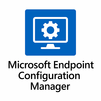
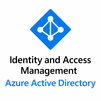



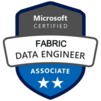
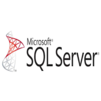

 Join our Live Instructor-Led online classes delivered by industry experts
Join our Live Instructor-Led online classes delivered by industry experts